An Dinh Palace in Hue is a must-visit destination when traveling to the ancient capital of Hue. Featuring distinctive European architecture, An Dinh Palace has been recognized by UNESCO as a World Cultural Heritage site and is also an ideal spot for young visitors. Enjoy the stunning scenery of An Dinh Palace with DanangPrivateCar.com through the article below!
Table of Contents
Address of An Dinh Palace in Hue
The palace is located right by the An Cuu River at 197 Phan Dinh Phung Street, now part of De Bat Ward, Hue City. Built in 1917, An Dinh Palace is a unique structure associated with several late Nguyen Dynasty rulers, including Emperor Khai Dinh, Emperor Bao Dai, Empress Nam Phuong, and Prince Bao Long.

An Dinh Palace Hue Ticket Prices, Opening Hours 2024
- Opening Hours: 6:30 AM – 5:30 PM (summer) and 7:00 AM – 5:00 PM (winter)
- Ticket Prices:
- Adults: 50,000 VND/person
- Children: Free
This site marks the beginning of the Hue artistic era with a blend of Asian and European cultures at the turn of the 20th century. Today, An Dinh Palace is also a popular destination for both domestic and international visitors when they visit the ancient capital.
History of An Dinh Palace in Hue
An Dinh Palace in Hue was constructed in 1917, during the reign of Emperor Khai Dinh. Prior to this, the site was home to Phung Hoa Cong Nguyen Phuc Bao Dao, who established a residence named An Dinh Palace. After ascending the throne, Emperor Khai Dinh renovated the residence and transferred it to Prince Vinh Thuy, who later became Emperor Bao Dai. During the renovation, the old structure was entirely demolished to make way for the new construction. Thus, the residence was renamed An Dinh Palace.
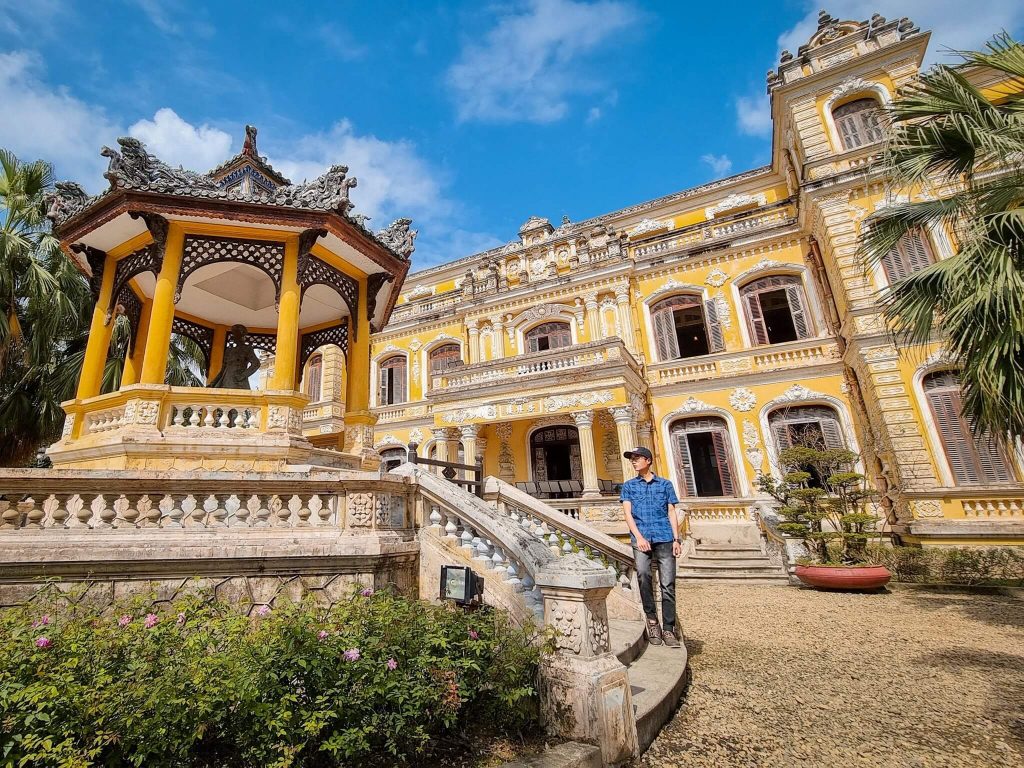
In 1945, Emperor Bao Dai‘s family moved from the Imperial City to live here, but their stay was short-lived. In 1954, An Dinh Palace was seized by the government of Ngo Dinh Diem. After 1975, the palace was repurposed for use by Hue’s professors and served various other functions.
An Dinh Palace and the Historical Tale of Empress Nam Phuong
An Dinh Palace is closely associated with Empress Nam Phuong, a woman of great talent and beauty but who did not find complete love.
Her real name was Nguyen Huu Thi Lan, originally from Annam. With a graceful appearance and a compassionate heart, she quickly captured the attention of Emperor Bao Dai and was later crowned empress. This marriage seemed destined for a happy ending, but it ended in sorrow when the emperor began a relationship with another woman.

With her humble nature and sacrifice for her children, she chose to remain silent and live with her mother-in-law. In 1947, she and her children moved to France, leaving behind the place that had once been so significant to her.
Architecture of An Dinh Palace and the Fusion of Asian and European Styles
Initially, An Dinh Palace in Hue featured a total of 10 structures, including: the Khaï Tuong Pavilion, a boat dock, Trung Lap Pavilion, the main gate, a pond, and the Cuu Tu Dai Theatre, among others. However, due to the ravages of time and war, only three main structures remain: the main gate, Khaï Tuong Pavilion, and Trung Lap Pavilion. Despite these changes, the architectural and historical value of An Dinh Palace continues to impress visitors.

Architecture of An Dinh Palace:
- Area: An Dinh Palace covers a total area of 23,463 square meters, surrounded by a wall that is 1.8 meters high and approximately 0.5 meters thick.
- Color and Design: The predominant color is yellow, which sets An Dinh Palace apart from many other structures in Hue. The grand backdrop featured in Hòa Minzy’s MV showcases the palace’s elegant design, combining modern trends with luxury.
- Main Gate: The main gate has two levels and is built in a traditional three-arch style. The floor is adorned with intricate ceramic tiles. Passing through, one encounters Trung Lap Pavilion, which has an octagonal structure elevated above the ground. The highlight of Trung Lap Pavilion is a bronze statue of Emperor Khai Dinh, perfectly proportioned to his actual size.
- Khai Tuong Pavilion: The most distinctive feature of An Dinh Palace is the Khaï Tuong Pavilion. Named by Emperor Khai Dinh himself, meaning “auspicious and prosperous,” this building reflects European castle architecture. It covers an area of 745 square meters and consists of three floors.
- First Floor: This level houses valuable artworks, including six paintings depicting the five royal tombs of Hue: Dong Khanh Tomb, Tu Duc Tomb, Thieu Tri Tomb, Minh Mang Tomb, and Gia Long Tomb.
- Second and Third Floors: These were originally the residence of Queen Mother Tu Cung and are now used for worship.
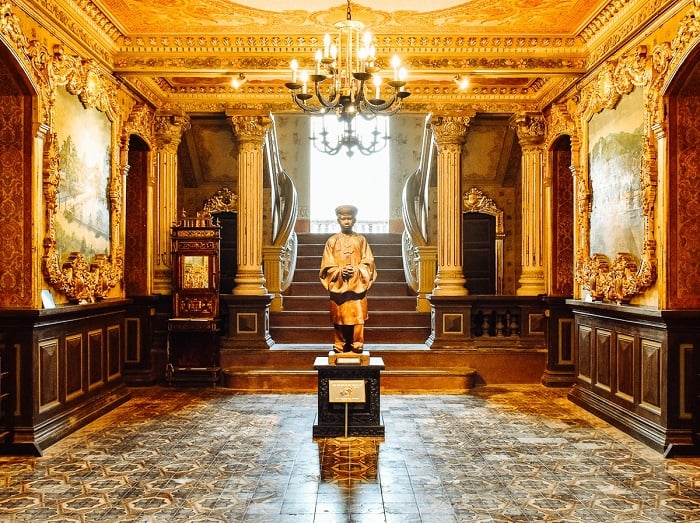
- Front Facade: The facade is adorned with meticulously detailed and elaborate patterns. An Dinh Palace features a mix of late Romanesque architecture and traditional Vietnamese motifs such as phoenixes, dragons, and the eight treasures. This fusion creates a uniquely distinctive architectural masterpiece that blends modern European elegance with the essence of Eastern culture.
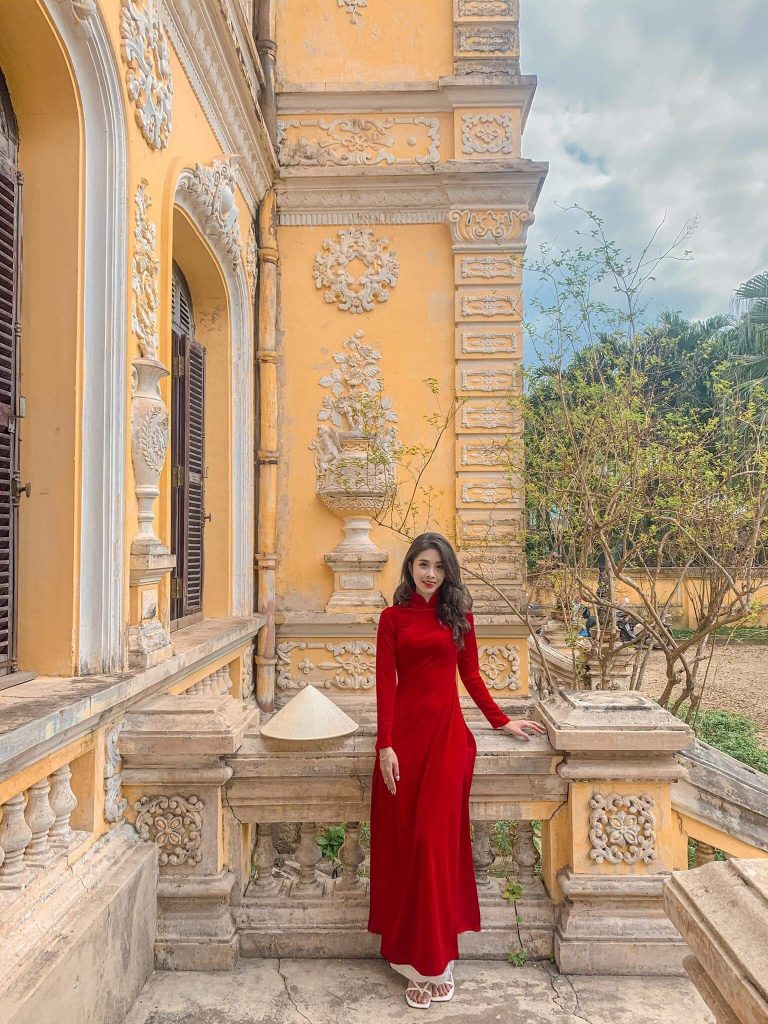
Must-See Attractions Near An Dinh Palace
When exploring Hue, don’t miss these incredible sites near An Dinh Palace:
Imperial City of Hue
The Imperial City of Hue is a masterpiece of Nguyen Dynasty architecture. Despite centuries of history, it still stands strong and impressive, with unique artistic features that captivate visitors.

Thien Mu Pagoda
Situated along the northern banks of the Perfume River, Thien Mu Pagoda is one of Hue’s most revered temples. Established in 1601 during the Nguyen Hoang era, it’s steeped in history and mystery, making it a fascinating spot to explore.

Perfume River
No trip to Hue is complete without a boat ride on the Perfume River, especially at night when you can release floating lanterns. The river, formed by the Huu Trach and Ta Trach rivers, wraps gently around Hue, adding to the city’s serene beauty.

Trang Tien Bridge
Located about 2 km from An Dinh Palace, Trang Tien Bridge is a landmark that spans the scenic Perfume River. It offers excellent views of Hue and is an ideal spot for appreciating the city’s picturesque landscape.

Special Cuisine to Try When Visiting An Dinh Palace in Hue
While exploring An Dinh Palace, you’ll find a variety of delicious local dishes that embody the essence of the ancient capital. Some must-try specialties include:
- Bun Bo Hue: A flavorful, spicy beef noodle soup that is a staple of Hue’s cuisine.
- Com Hen: A unique rice dish made with baby clams, often enjoyed with a range of fresh herbs and crunchy toppings.
- Bun Hen: Another clam-based noodle dish, known for its light yet savory taste.
- Banh Canh: A thick noodle soup rich in flavor, perfect for those who appreciate hearty meals.
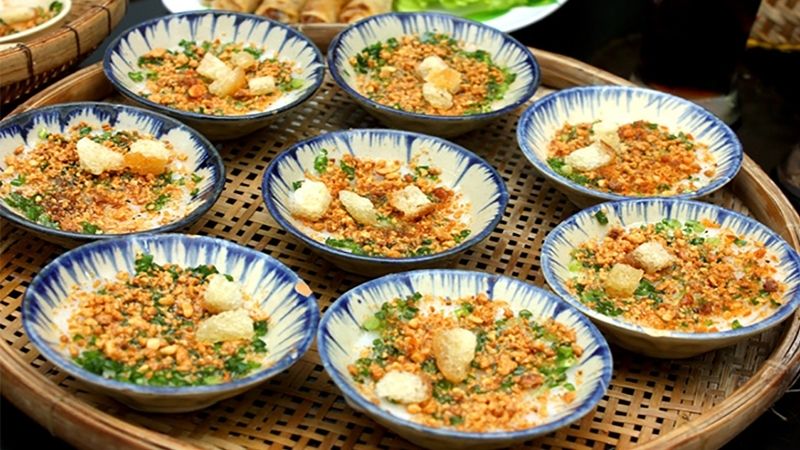
Don’t miss out on Banh Beo, a signature dish of An Dinh Palace. These small, savory steamed rice cakes are memorable for their delicate texture and delicious taste. A taste of Banh Beo will leave a lasting impression of your visit!
Tips for Visiting An Dinh Palace
Before visiting An Dinh Palace in Hue, here are some important tips to ensure a smooth and enjoyable trip. Historical sites and landmarks in Hue have certain rules and regulations:
- Wear appropriate clothing: Choose modest attire; avoid short skirts or pants, sleeveless tops, and off-shoulder outfits.
- Maintain cleanliness: Be mindful of littering; keep the area clean and dispose of trash properly.
- Do not touch artifacts: Avoid touching, moving, or defacing any items or walls.
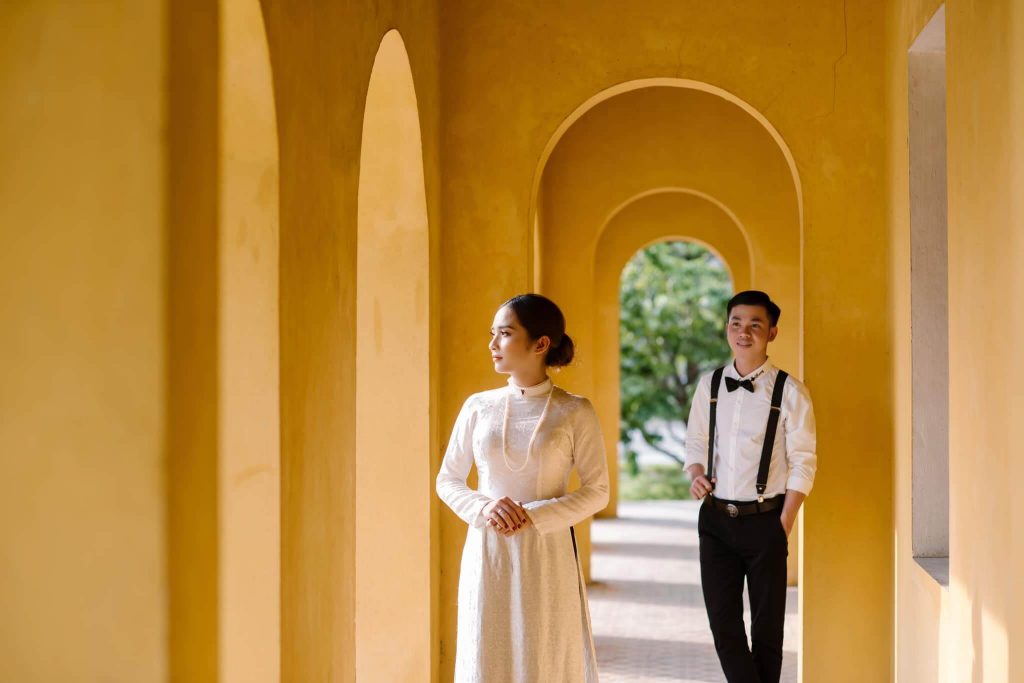
- Minimize noise: Keep conversations and laughter at a low volume to maintain a respectful atmosphere.
- Check the weather: Plan your visit on pleasant, cool days to make walking and photography more enjoyable.
Conclusion
An Dinh Palace in Hue is a historic site that has witnessed significant milestones in Vietnamese history. It is also a popular spot for photography among both domestic and international visitors. With its unique architecture and intricate, refined carvings, An Dinh Palace captivates with its beauty. DanangPrivateCar.com’s Hue Travel Guide has enriched your list of must-visit places in Hue. Don’t forget to visit An Dinh Palace and share your wonderful moments with DanangPrivateCar.com!

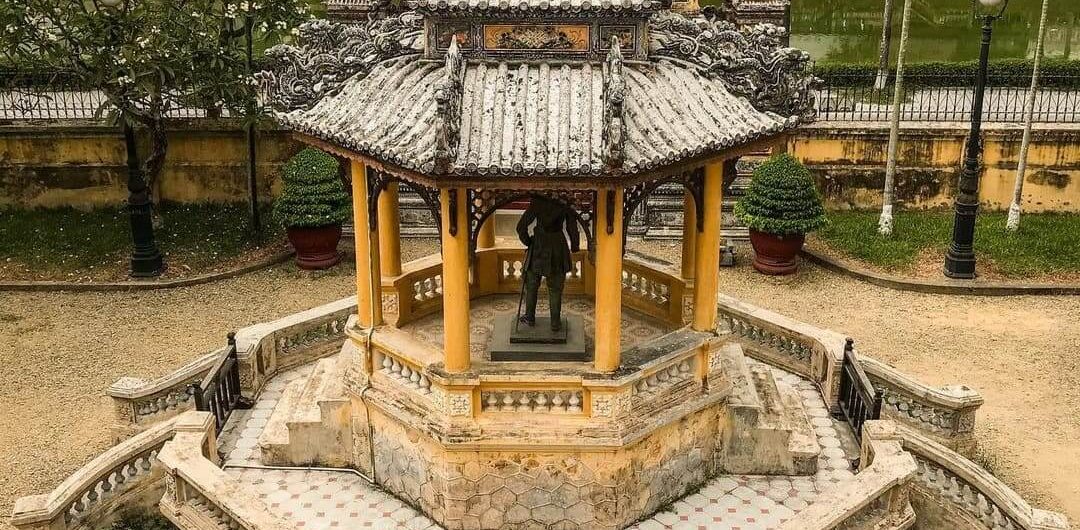
Comments